Curbside Classic: 1978 Ford Fiesta

In the depths of the gloomy automotive winter of the late seventies, the Fiesta made a brief appearance that brought a ray of sunshine into our deprived existence. She was like that cute, skinny little German exchange student who appeared one day at High School, and dazzled us with her algebra, physics, gymnastics and fencing. The jocks didn’t know what to make of her, and their girl friends cast disdainful glances at her. But those of us who favored taut agility over big hips and padded vinyl tops fell hard for her. And when she suddenly disappeared just as mysteriously as she’d arrived, she left behind the kind of memories that last a lifetime.
Ford had the same problem in 1978 as it does today. Its compact car has been in production almost a decade. The market is shifting to ever smaller cars. CAFE standards are tightening. The Asian brands are cleaning up in the segment. What to do? Well, its Fiesta is going gang-busters in Europe. So bring it here, stat. Sound familiar? Well, history has an annoying habit of repeating itself, especially in the car biz.
So if history does repeat, what does the 1978 Fiesta tell us about the 2011 Fiesta? Shall we start with the good news? The Fiesta was a ball to drive. In fact, it was flat-out the most bang-for-the-buck fun on four wheels available in the US at the time. Thank VW’s repeated bone-headedness for that.
The Rabbit/Golf Mk.1 had arrived three years earlier with exactly the same description as above: light, zippy, toss-able; the early Rabbit delivered an unparalleled package of Euro-spec delight. But in 1978, VW opened its first US factory (history is about to repeat again), and hired an ex-GM exec James McLernon to run it…into the ground. He knew what Americans wanted in a VW: a “Malibuized” Rabbit with a softer suspension and cheaper interior, and reduced the engine size from the zippy 1.6 in 1977, to a substantially weaker 1.45 liter.
Willkommen Fiesta! It came straight from the Cologne factory in undiluted and unadulterated form. Actually, it was better than what the Europeans got, with a bigger engine than was offered there, until 1981’s XR2 came along, anyway. Europeans had a choice of 900cc, 1.1, and 1.3 liter engines, the US version had a 1.6; all were revised versions of the old Kent OHV engine. Not as smooth and zippy as the VW EA827 OHC unit, it nevertheless got the job done. Especially since the Fiesta was a whole size smaller than the Rabbit/Golf, and weighed only some 1700 pounds.
The Fiesta’s roots origins go back to a stillborn Ford world car concept of 1963. But the idea sprang back to life in the beginning of the seventies, in response to the popular new Euro hatchbacks like the Fiat 127 and Renault R5. The European Escort back then was still RWD, and destined to get bigger, so Ford put out the call for a contemporary FWD design, and Tom Tjaarda at Ghia answered.
Project “Bobcat” was approved in ’73, and Ford set up assembly lines in Spain, England and Germany to build up to 500k units per year. And ever since, Fiesta has been a mainstay of Ford’s European ops. It was never planned for the US, but the energy crisis, VW’s Rabbit, and the madly successful new Civic forced Ford’s hand. A quick modification to meet US crash, safety and emission standards got it here; but the Fiesta ended up just being a three-year stop-gap until the all-new FWD Escort arrived in 1981. That’s the bad news, presumably not to be repeated.
Ford followed VW’s Rabbit footsteps and drastically dumbed down its new FWD global-platform 1981 Escort for the US. So the Fiesta ended up being an automotive-enthusiast mayfly: here today, gone tomorrow. I don’t know the numbers, but I suspect that Ford didn’t import nearly as many as they might have, because they were probably losing money on each one, due to the weak dollar at the time (think Astra). That’s also why the new Fiesta will be hecho en Mexico.
The Fiesta was one of the few rays of sunshine during the bleak late-seventies Malaise Era. Especially so in bright yellow, like this one, just like the one my twenty-year old sister-in-law bought used and sight unseen, without knowing how to drive a stick. I got the honors of bringing it home from Pasadena, and then teaching her how to drive it. Fun times.
She was a pretty quick learner, despite the un-ambivalent clutch. And the Fiesta was pretty quick too. Zero to sixty came in about eleven or so seconds. That was enough to worry some of the strangled V8s coming out of Detroit, like the 110 hp Chevy small blocks. With sixty-six perky ponies on tap, street light drags were harmless fun. But tight traffic and edgy canyons were Fiesta time. It was one eager little puppy. No wonder some Fiestas are still hard at work autocrossing.
The owner of this Fiesta has a bright green “S” model that he uses for that purpose. The Fiesta’s Kent engine is eminently tunable, the English equivalent of the Chevy small block. And Euro Ford’s long-running rep for good handling was already established. Attention to detail pays off.
I think the owner told me he has or had a third one too. They’re probably the last roadworthy Fiestas in Eugene. How about in your town? Parts are getting iffy, he told me; having to reach out to Europe, for things like a throttle cable. That’s how it is, when it gets to the end of the line for some of the imported cars that were once so plentiful. There comes a time where it just gets too hard, at least for a daily driver like this example.
That’s why I feel a sense of urgency about Curbside Classics. Once-common cars are disappearing quickly; where are all the gen1 Coronas? Mazda 626s? GM H-bodies? I’m making myself anxious; better grab the camera and go on the hunt. Too bad I don’t have a Fiesta to hop into for the task. That would really inspire me, especially if it was sunshine yellow. Oh well. But I do know where a bright yellow Ford Festiva is parked. Is that CC worthy, or not?
Thank you for all of your comments and suggestions yesterday. The one that I most took to heart was the suggestion to have a broader international scope for those cars produced and/or sold abroad. In hindsight, I realize now that this Fiesta CC is very US-centric, even though the Fiesta was one of the first truly global cars, and its impact in Europe was much more significant and lasting than in the US. If you look at the series of flags affixed below the Fiesta’s rear logo, they’re all European; the stars and stripes are noticeably absent. Did Ford do that on purpose, or were they too cheap to change it for what they knew was going to be a short three-year “study abroad” program?

More by Paul Niedermeyer
Latest Car Reviews
Read moreLatest Product Reviews
Read moreRecent Comments
- MRF 95 T-Bird I recently saw, in Florida no less an SSR parked in someone’s driveway next to a Cadillac XLR. All that was needed to complete the Lutz era retractable roof trifecta was a Pontiac G6 retractable. I’ve had a soft spot for these an other retro styled vehicles of the era but did Lutz really have to drop the Camaro and Firebird for the SSR halo vehicle?
- VoGhost I suspect that the people criticizing FSD drive an "ecosport".
- 28-Cars-Later Lame.
- Daniel J Might be the cheapest way to get the max power train. Toyota either has a low power low budget hybrid or Uber expensive version. Nothing in-between.
- Daniel J Only thing outrageous was 400 dollars for plug replacement at 40k miles on both our Mazdas with the 2.5T. Oil change every 5K miles.






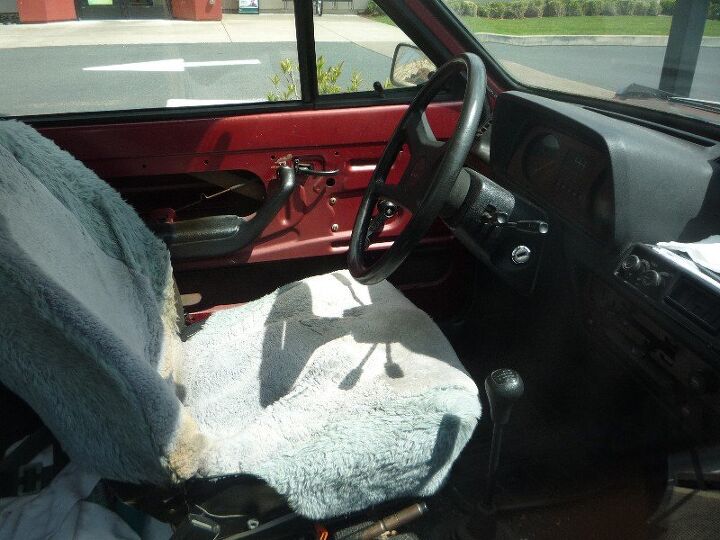















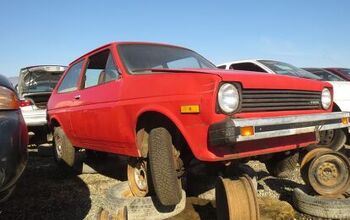
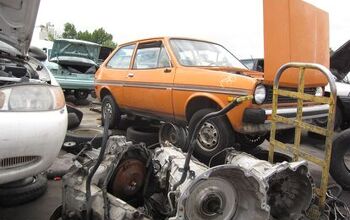

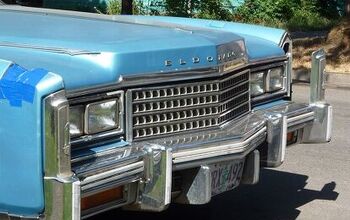
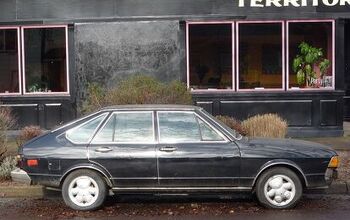











Comments
Join the conversation
My first experience with the original Fiesta was as rentals during my brief period living and working in downtown Boston when I didn't own a car. Invariably, I managed to get one as the Decor model with the fab factory manual sunroof with interchangeable glass and steel panels. Great fun for weekend trips. Driving them forced me to vow to own one. That occurred when I moved to Portland, Oregon and had to commute 50 miles from the hills above downtown to wine country 50 miles south. I found a used 1978 'S' model in radar red, and that made my commute much more fun. I later sold it in order to trade up to a 1980 Ghia trim level model. When I later transferred back to Boston, I eventually ended up with three more(a blue '80 Ghia, white '80 Decor, and a red '78 Decor), two of which I sold to friends. For that time period (1982-1986) they were super cars to own, so well designed and built.
A late read... Great write-up. I actually still have my 1980 (Base version), but have added several accessories. Used to be part of a Fiesta Club located in Washington... Lots of fun for many a years. I remember I won an award for longest distance traveled all the way from SoCal. And yes, they are fun to drive. Mine never miss a beat, although it did have its overheating issue like many, but most of us just pulled the thermostat out and it helped a lot. Have had mine garaged since the late 80's. due to leaky valve seals. I did some customizing, R/R the US Bumpers, converted door locks and windows to electric and added several accessories. A previous poster mention BAT (British American Transport they were called)... can see that there still around (as BAT Inc). There was also another group west coast that sold all the trim/fender flare and misc accessories (no longer in business... can recall their name off hand), but acquired some nifty add-on's from them as well. In-deed a great car and never regretted buying it. There's still a few early Fiesta Groups around... one on Yahoo that I (somewhat) keep in touch with. In due time, I'll revive the engine and get it back out on the road.